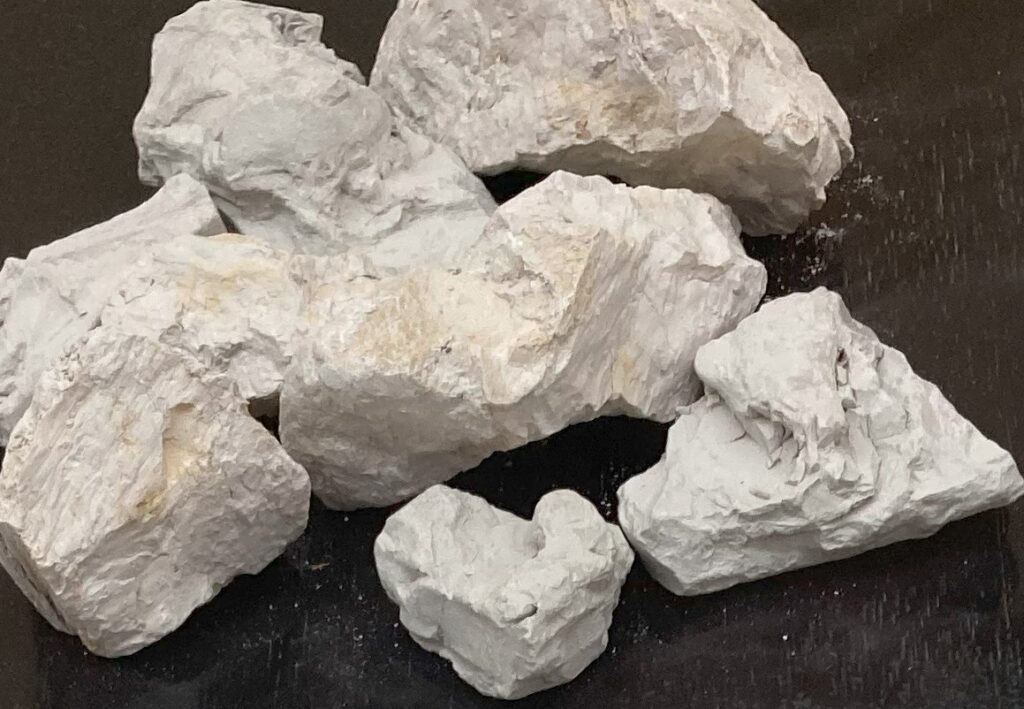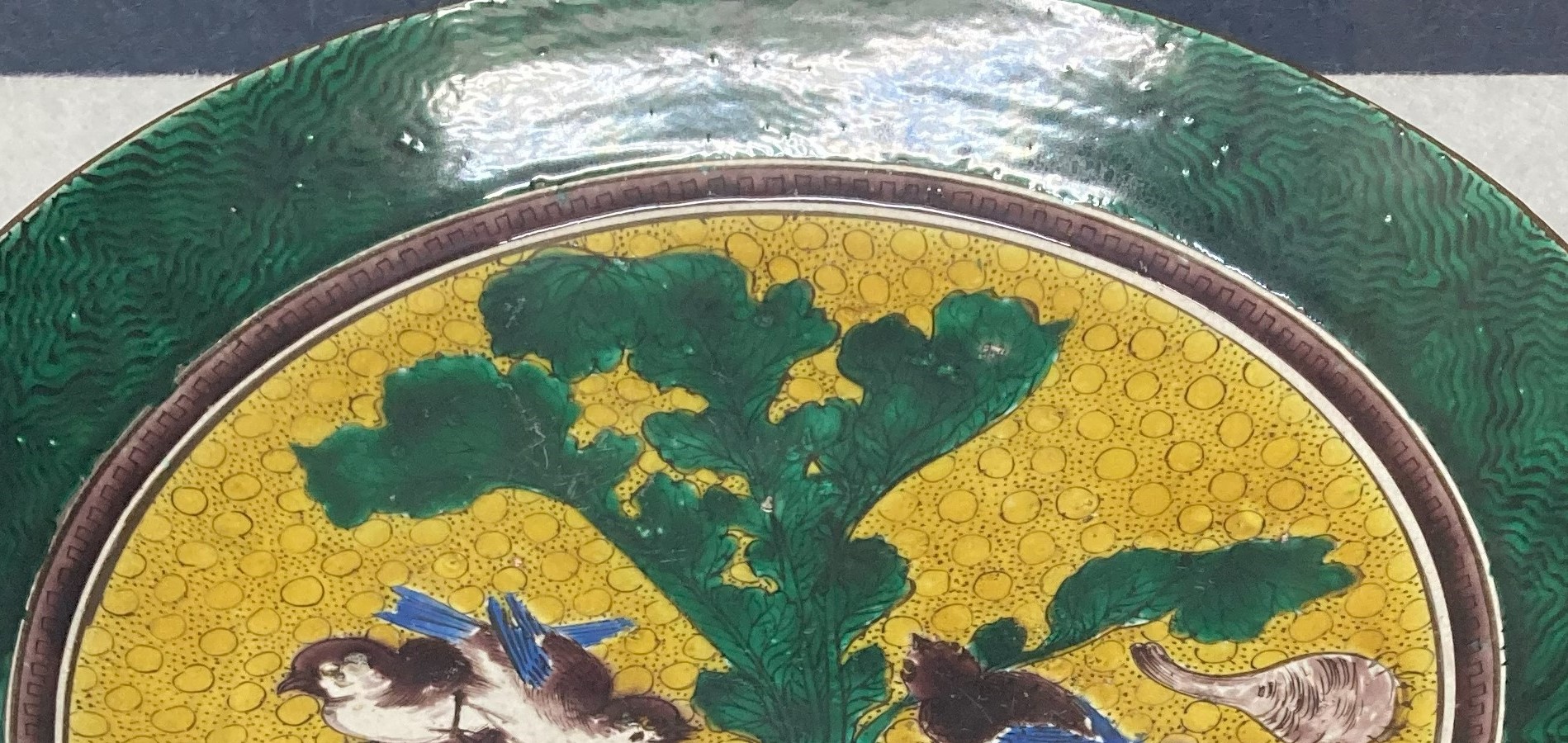本ブログは観光業、企業接待、留学生対応等で英語案内が必要ながら、多忙で準備に時間をかけられない方々の為にすぐに使える情報を分かりやすく解説しています。
今回は商談で訪日中の重要顧客から、日本伝統工芸品の作業工房に「行ってみたい」と言われ《九谷焼》工房にご案内をすることになったシチュエーションです。
本ブログは工房案内時の簡単な口頭説明用なので、高度で詳細なものをご希望の場合は公式サイトや専門サイトをご参照下さい。今回は(1)型やろくろで成型する「素地制作」と(2)その素地に絵を描く「絵付」の2パートに分けて、各工程を実際に一緒に見ている想定で展開しています。
0. 工房見学前の事前説明(ご参考)
今回テーマではありませんが、陶磁器、漆器の区別が不明瞭な多くのインバウンド向け事前情報として纏めましたので必要に合わせてご利用ください。英語音声は米国女性話者です。
《日本語》
- 日本の伝統工芸品の食器は木を削って作る漆器と粘土を整形して作る陶磁器に大きく分けられます。
- 陶磁器は固く熱に強いですが落とすと壊れやすい一方、漆器はその逆の性質を持ちます。
- 陶磁器は粘土が主成分の陶器と粘土にガラス成分の石を混ぜて耐久性を持たせた陶器に分けられます。
- 一般的に陶器は厚手で光を通さず土の素朴な風合いと優しい手触り感があり、磁器は薄手で光を通す透明感から繊細で滑らかな独自の美があります。
- 和食料理では、陶器と磁器の性質、並びに各器の形と色彩のデザインに応じて使い分けられます。
- 陶器は瀬戸焼、美濃焼、信楽焼、磁器には有田焼、九谷焼 、京焼などがあり、数百年にわたる夫々の伝統の違いがあります。
- 陶器製作は大きく分けて、型やろくろで成型する「素地制作」と、その素地に絵を描く「絵付」の2工程に分けられますが、九谷焼では後者の『絵付』に最大の特徴があり、そのデザインと色彩の多様が九谷焼のブランドイメージとなりました。
- 『絵付け』は伝統的な手書きの物と最新デジタル技術を使った「転写」によるものに大きく分けられます。
- 一般的に手書きの絵付けは職人技による芸術性を追求しますが、転写技術ではその芸術性を損なわず、逆に手書きで困難なデザインも実現していて九谷焼の多様化が進みました。
- 工房見学は様々な工程の中で『素地作り』から見せるものと『絵付け』をメインにしたものがありますので、ご自身の興味に合わせた選択が可能です。
《英語》
- Traditional Japanese tableware can be broadly divided into lacquerware, which is made by shaving wood, and ceramics or china, which is made by shaping clay.
- While ceramics are hard and heat-resistant but easily broken when dropped, lacquerware has the opposite property.
- Ceramics can be divided into two types: pottery, which are primarily composed of clay, and porcelain, which is made by mixing clay with stones, a glass component, to give it durability.
- In general, pottery are thick, impervious to light, and have the rustic texture of clay and a gentle feel to the touch, while porcelain is thin, allowing light to pass through. and has a unique, delicate and smooth beauty to the eyes.
- In Japanese cuisine, pottery and porcelain are used according to their properties, as well as the shape and color design of each vessel.
- Pottery include wares of Seto, Mino, and Shigaraki, and porcelain have wares of Arita, Kutani, and Kyoto, each with a tradition over several hundred years.
- Porcelain production can be broadly divided into two processes: “base production,” which involves molding it’s shape on a potter’s wheel, and “painting,” which involves drawing pictures on the base.
- “Painting” can be broadly divided into two types: traditional hand-drawn and “transferring images” using the latest digital technology.
- Generally, hand-painting pursues artistry through craftsmanship, but the transfer technique does not impair that artistry and, conversely, realizes designs that are difficult to achieve with hand-painting, thereby diversifying Kutani ware world.
- The workshop tour includes two types of tours: one showing the various processes, starting from “making the base” and the other focusing on “painting,” so you can choose the one that best suits your interests.
1.「素地制作」
伝統的な素地づくりの工房見学をするパターンです。実際に一緒に目の前の工程を見ているので、こんなに細かい説明をする必要は勿論ありませんが、一通りの表現が念頭にあれば、相手の反応に合わせて臨機応変な対応が(特に「何故?」=作業意図=の説明はロジカルなインバウンドにはとても重要なので)できますので、下記のレベルで置いています。👉いつも通り、日本語で言えないことは英語でも言えませんので、日英の順で。
1-1.採石・粉砕・水簸(すいひ)・坏土(はいど)・土もみ
成形以前の主たる5工程は九谷焼の独自性は少なくパネルでの解説が想定されますので、纏めてポイントのみ置きました。

《日本語》
- 九谷焼には、19世紀初めに発見された花坂産の陶石が、200年以上経った現在でも使われています。
- 現在はショベルカーを用いた露天掘りで地表を掘り、採石が行われています。
- 粗く砕かれた陶石は、自動化された機械で杵のように衝かれ、さらに細かく砕かれます。
- 選別された良質の石粉に水を混ぜ、泥漿(でいしょう)を作ります。
- 泥漿から水分を除去し、円盤状に型抜きされた原料土の板(ケーキ)が作られます。
《英語》
- Kutani ware continues to use ceramic stone from Hanasaka, first discovered in the early 19th century and still utilized over 200 years later.
- Today, the quarry is excavated using open-pit mining with excavators.
- The coarsely crushed ceramic stone is further broken down by an automated machine that pounds it with a pestle-like mechanism.
- High-quality, selected stone powder is mixed with water to create slurry (deishou).
- The water is then removed from the slurry, forming clay cakes that are molded into disk shapes for further processing.
1-2. 成形(molding)
粘土を器や置物の形にしていく見てわかる工程なので、背後の成形方法について説明しています
《日本語》
- 粘土から成形する手法には、完成品の用途に合わせて、ろくろ成形、鋳込み成形、手作業の成形に分けられます。
- 轆轤成形は円形の器を作るオーソドックスな方式で、練った粘土の塊を轆轤で回転させながら成形します。
- 鋳込み成形は、石膏の型に液体状の粘土を流し込んで成形するため、量産が可能で、器や置物などに使われます。
- 昔ながらの手作業による成形方法は自由度が高く、どんな形でも作れますが、手間暇がかかるため、茶道や記念品など、個性が求められる用途に限られます。
《英語》
- The methods of shaping clay can be divided into rokuro molding (wheel throwing), casting, and hand molding, depending on the intended use of the finished product.
- Rokuro molding is the traditional technique for creating circular vessels, where a lump of wedged clay is shaped by rotating it on a potter’s wheel.
- Casting involves pouring liquid clay into a plaster mold, allowing for mass production of items such as tableware and figurines.
- The traditional method of hand molding offers great flexibility, allowing for the creation of unique shapes. However, due to the time and skill required, it is primarily used for specialized purposes, such as tea ceremony wares and commemorative items.
1-3. 乾燥・仕上(drying, trimming)
《日本語》
- 乾燥工程では、天日による自然乾燥や乾燥機を使用して乾燥させます。
- 仕上げ工程では、ある程度粘度が残っているうちに手作業が加えられます。
- 職人の手作業によって、急須のつまみや香炉の脚などが付け足されます。
- 仕上げカンナを使って、高台や縁を削り、細かい仕上げを施します。
《英語》
- In the drying process, pottery is either naturally air-dried under the sun or placed in a dryer.
- During the finishing stage, handwork is applied while the clay still retains some viscosity.
- Artisans manually attach elements such as teapot knobs and incense burner legs.
- A fine finish is achieved by carefully shaving the foot ring and edges using a finishing plane.
1-4. 素焼(Biscuit /Biscue firing)
成形した器や置物を焼成します。昔は高温環境を確保する為に登り窯に薪を焚いて焼き上げていましたが、最近はガスや電気の窯が主流になりどんな場所でも成形できるようになりました。
《日本語》
- この工程では、成形物の水分を除去し、可燃物を燃焼させることで、土の乾燥と強度を高めます。
- 窯の中で約8時間かけて焼成しますが、器物の損傷を防ぐため、温度はゆっくりと上げます。
- 約800度の高温で焼かれ、鼠色の土が肌色の素地へと変化します。
《英語》
- This process removes moisture from the molded clay and burns combustible materials, enhancing its dryness and strength.
- The kiln is fired for approximately eight hours, with the temperature gradually increased to prevent damage to the vessels.
- At around 800 degrees Celsius, the clay transforms from a grayish tone to a warm, skin-colored base.
2.「絵付」
- 下絵付け・施釉(せゆ)
- 本窯焼き
- 上絵付け
- 上絵窯焼き・金窯
2-1.下絵付け・施釉(せゆ)(glazing )
ここでは一目見てわからないことが多いので、想定される自然な疑問(why)を想定して、少し細かく記載しています。
《日本語》
- 下絵付とは、釉薬(ゆうやく)をかける前の素焼きの器に柄や文様を描くことを指します。
- 釉薬とは、高温で焼くことでガラス質に変化し、器を覆う膜となる液体のことです。
- 釉薬は主に珪石、長石、石灰などを水に溶かして作られます。
- 下絵付では、主にコバルトを含む顔料(呉須)を用いて描かれます。
- この顔料は焼成後に紺色へと変化し、一般的に「染付」と呼ばれる技法となります。
- 施釉(せゆう)は、素焼きの器に釉薬をかける工程のことを指します。
- 器の表面に均一に釉薬を施すには、職人の素早く正確な技術が求められます。
《英語》
- Underglaze painting is the process of decorating unglazed pottery with patterns before applying glaze.
- Glaze is a liquid that, when fired at high temperatures, transforms into a glassy layer that coats the vessel.
- It is primarily composed of silica, feldspar, and lime dissolved in water.
- Underglaze painting is typically done using cobalt-based pigments (gosu).
- After firing, these pigments turn dark blue, a technique commonly known as Sometsuke.
- The glazing process (seyu) refers to the application of glaze to an unglazed vessel.
- To ensure an even coating on the surface, skilled artisans must work with precision and speed.
2-2. 本窯焼き
ここは一目見ることはできませんので、補足説明的に置いています。素焼きもそうでしたが現在の九谷焼は工業化が進み、本窯焼きも以前のような登り窯は必要なく、ガス窯や電気窯が主流です。
《日本語》
- 素焼きよりも高い温度の約1300度まで徐々に焼き上げます。
- 焼成時間は約12〜15時間で、本焼きを終えると、素地は白くなり、釉薬は透明になり、ツヤが出ます。
《英語》
- It is gradually fired to approximately 1,300 degrees Celsius, a higher temperature than that used for unglazed pottery.
- The firing process takes about 12 to 15 hours. Once completed, the base turns white, and the glaze becomes transparent, creating a glossy finish.
2-3 上絵付け
ここは九谷焼の花形工程の絵付け作業であることはわかりますが、沈黙を避ける意図で置いています。
《日本語》
- 本窯焼きされた白磁の器に黒の呉須(ごす)で、輪郭や文様の線描き(骨書き:こつがき)を施します。
- 呉須は、コバルト、マンガン、鉄などを含む顔料です。
- 水墨画のように濃淡(呉須濃:ごすだみ)をつけて陰影を表現することもあります。
- 基本的に九谷焼は、呉須の黒と、九谷五彩と呼ばれる緑、黄、紫、紺青、赤の5色の和絵具で彩られます。
- 和絵具を施すと一旦、呉須の線は見えなくなりますが、完全に消えるわけではありません。
《英語》
- The outlines and patterns are delicately drawn on a white porcelain vessel, fired in the main kiln, using black gosu pigment.
- Gosu is a pigment containing cobalt, manganese, and iron.
- Like ink paintings, shading techniques known as gosudami are sometimes used to create depth and contrast.
- Kutani-yaki is traditionally colored with black gosu and five vibrant shades of Japanese paints known as Kutani Gosai: green, yellow, purple, dark blue, and red.
- Once the Japanese paints are applied, the gosu lines temporarily disappear beneath the surface—but they are not lost.
2-4 上絵窯焼き・金窯
《日本語》
- 上絵付された製品は800〜1000度まで上絵窯で焼成され、絵具が器に定着します。
- 淡い色の和絵具が焼成されることで色が変化し、鮮やかな色彩へと変わります。
- 和絵具は焼成によってガラス質へと変化し、透明感が生まれ、下に描かれた呉須も透けて見えます。
- この繊細な文様が浮かび上がる独特の透明感は、九谷焼の特徴の1つと言われています。
- 金窯工程では、上絵窯の後にさらに金彩や銀彩を施し、約400度で焼成します。
《英語》
- The overglaze-painted pieces are fired in an overglaze kiln at temperatures between 800 and 1000 degrees Celsius, fixing the pigments onto the vessel.
- As the delicate Japanese paints are fired, their hues transform, developing into vibrant colors.
- During firing, the paints undergo a chemical change, becoming glassy and translucent, allowing the underlying gosu patterns to subtly emerge through the surface.
- This distinctive transparency, with delicate motifs appearing to float, is considered one of the defining characteristics of Kutani-yaki.
- In the gold kiln process, following the overglaze firing, additional gold or silver embellishments are applied and fired at approximately 400 degrees Celsius.
御礼🔶あとがき
お忙しい中、今回も最後までご覧いただき大変ありがとうございました。今回テーマ含め今後も定期的にブラッシュアップして参りますので、引き続きご参照のほど宜しくお願い致します。🔶Gold💎v4a.3a.1a/250409


